Life is full of big changes, everyone goes through a few in their lifetime, and some of these things are in our control and some aren’t. Knowing changes are coming, whether they’re positive or negative, isn’t always easy. As change happens, your routines are disrupted and suddenly you have to adapt as you are pushed further and further out of your comfort zone. For the little people in your life, generally, when a big change happens in their home, they have little control over what’s happening, may not even understand what or why something is happening, and it can be hard.
Some examples of these life changes affecting small children could be a new sibling, parents separating, losing a family member, moving to a new house or even a new city or town. While these changes affect everyone in the house, children don’t necessarily have the coping skills yet to deal with them. Children who are new to major life changes need extra support in addressing their feelings, understanding and adjusting to change, and learning new strategies and skills along the way. As their parent, even if you’re also dealing with these changes yourself, you have to find time for your children to support them through this change. They may be small, but their feelings matter just as much as everyone else’s.
If you can, give them time to prepare. Is Nana sick? Have a conversation with your children about what this could mean: her not being able to see them while she recovers. Maybe it means time in hospital and she may look different, or maybe it’ll be harder to touch her or talk to her, and maybe it means she may not survive. You may need to prepare yourself first about how you’ll have these kinds of hard conversations with them.
Is a new baby coming? Assure them this does not mean you will love them any less. Let them know that while a new baby may need more attention in the beginning, you’re always there for them and you will still have special time together. Many parents swear by having a special toy basket set up for when the baby needs to be fed, and putting these random, loose parts in the basket that can change regularly to keep them interested.
At our centres, we can arrange activities that help children understand the changes that may be happening at home.
For example, when it comes to a new sibling’s arrival:
“We have had a few new sibling arrivals, and with that we will set up some baby care stations with wraps, bottles, rattles, nappies clothes, etc,” says Skye, an educator at our Yatala campus. “We even do a little bath sensory activity, we read books on the arrival of babies at home and also find some songs about families,”
If you’re at a loss on where to start preparing, book stores and libraries these days have incredible selections of books for children to help them understand in age-appropriate ways big life changes that can affect them. Whatever the scenario, by giving them time to process and accept the change that’s coming, things may be easier when they actually do come. They may not offer up what’s happening in those busy minds and you may need to check in and ask them how they’re feeling or what they think. “I told you not long ago that Mummy and Daddy have to sell the house because we have to move to another city. What are some of the things that come to mind when you think about not living here anymore?”
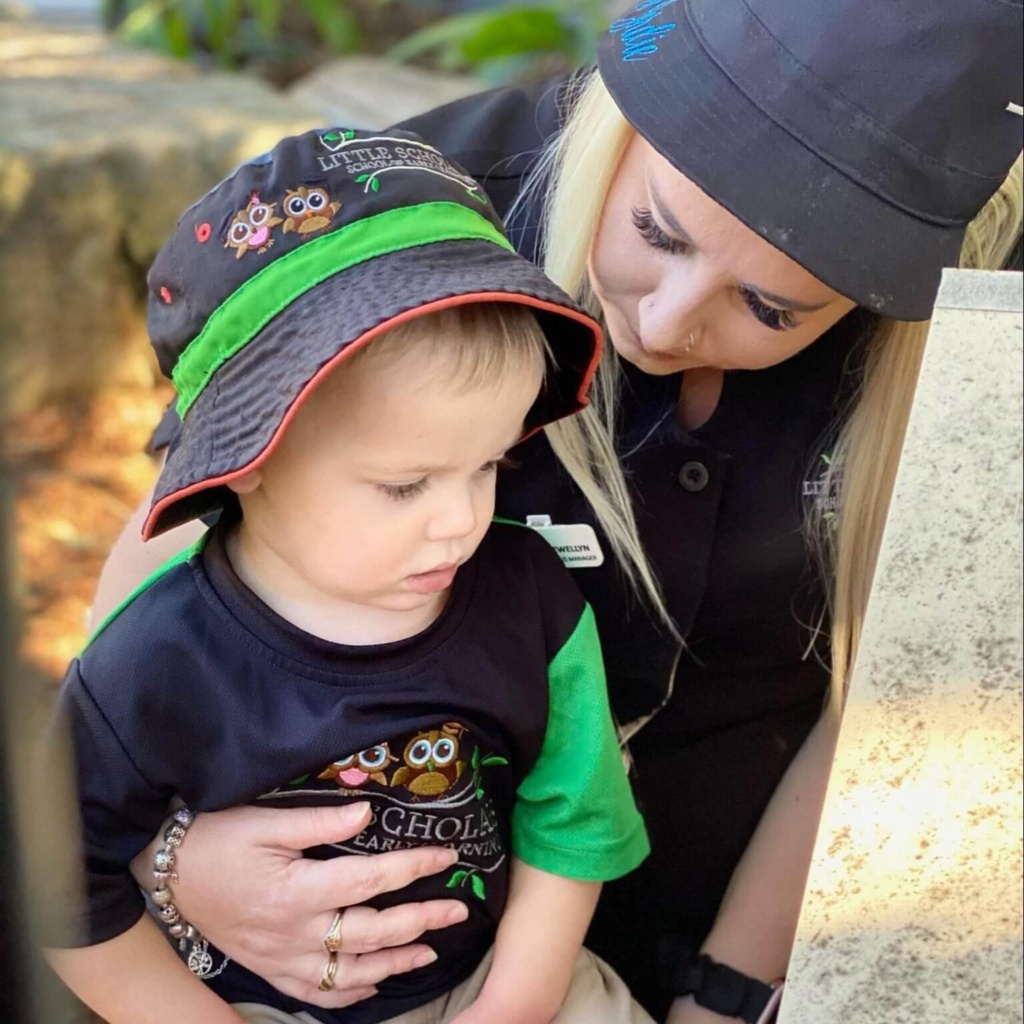
Take time to listen to their concerns. Be ready to answer questions (and for most children, there will be more and more questions!) and know these questions may come up at what seems to be random times, but that goes to show they internalise change and are trying to process it maybe even more than you think! Say something like, “Moving to a new place can feel sad and scary. It’s okay to feel that way. Let’s take some deep breaths. We can get through it together.”
You may need to help them identify what their feelings are and explain what they mean: emotions such as feeling anxious, sad, scared, excited, and nervous are normal feelings and won’t last forever, and also let them know that these are feelings grown-ups feel too.
Consistency and stability are just as important now as ever before. Bedtimes and mealtimes should remain consistent and are great times to connect as a family, even if the family dynamic is changing. The structure feels safe for children, so provide as much of it as possible to restore a sense of safety. Avoid a lot of big changes at once. Even if there’s a new baby coming, this may not be the time to move your child from cot to big bed if they’re already unsure of their feelings about not being your baby anymore. If Mummy and Daddy are going to live apart, help them set up their second bedroom similarly to the one they’ve known, and try to keep those routines the same, no matter what home they’re spending time in.
“When it comes to a family break, we always talk with parents encouraging them to keep the same routine at both houses, like toileting, comforters, for example,” Skye says.
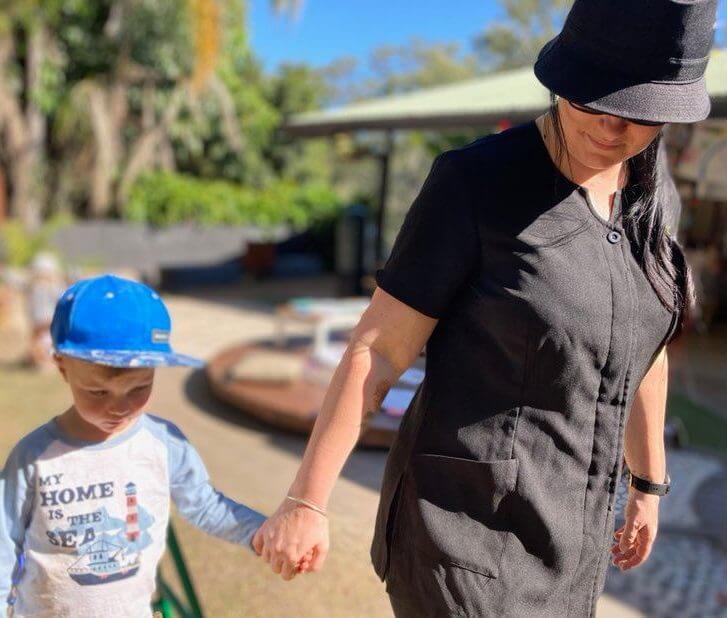
Another thing that should remain consistent is your child’s relationship with you. Make sure your child knows that no matter what else changes, you aren’t going anywhere, and neither is the bond you have with your child. You are always there for them, even if it’s by phone when you can’t be beside them.
Set aside even 10 minutes each day to give your child your undivided attention. Make eye contact, put the phone away, and be playful and affectionate. This will be as good for you as it is your children. If your thing together is going for a walk together, keep doing it. Being cuddled up and reading books together is a wonderful way to maintain your bond. Do an activity together that your child enjoys, whether it’s video games or kicking a ball around, playing dolls or colouring together, you may be surprised with what they’ll remember long into the future about what their time with you meant. Try to remember that a little extra attention and parent-child time reassures your child that your love will stay consistent, making it much easier to cope with changes in other aspects of life.
Our relationships with our families are so important. We can and would like to help! Talk to your educators or campus manager about what’s going on at home. Your educator may have noticed changes in your child’s behaviour or emotions already, which has given them the heads-up something is different.
“How I notice when children are going through tough times or even have experienced a traumatic event is when they start ‘acting out,’” says Holly, an educator at our Stapylton campus. “Difficulties eating and sleeping than their usual, acting clingy more than usual, more tantrums, losing interest in activities they once enjoyed, they stop playing with their friends and aren’t socially interacting, drawings that are concerning about what is happening in their lives, regression with toileting and even going back to thumb sucking etc.”
By letting educators know what’s going on at home, they can help by ensuring your child has the attention he or she needs especially at this time, or they can help facilitate activities or learning exercises to support feelings your child may be experiencing.
“You definitely need to have built a strong and positive relationship with families in your centre, to ensure you can effectively work together,” Holly says. “Document children’s change of behaviour if you’re concerned and communicate with families about this. It also helps to provide strategies that you will implement at the centre as well as helping families with strategies for home.”
“We always give lots of extra cuddles and when we notice they are having a tough day, and encourage them to do some relaxing activities like laying on the cushions reading, playdough, sensory bottles, calming toys like fidget spinners, poppets, mini lava lamps, just things that give them some space and also some one-on-one time,” Skye says.
It’s our job to help ensure your child is spending their time with us in a warm, welcoming, supportive and caring environment in which she or he can grow socially, cognitively, emotionally, and physically, and we’re here to support your entire family. We have an open-door policy, and you’re very welcome to call or come in to talk as much as you need.
Why do our children sometimes express some big bursts of negative moods after they come home from a seemingly fun day at childcare? This could be due to after school restraint collapse. Meanwhile, you expect them to come home happy and excited to tell you all about their day of crafts, books, playtime and outings, after all, you often get reports that your child was an angel all day. But when he or she comes home, that angel seems to have taken those wings and flown away, being replaced with something not so angelic.
Some child experts call it ‘after school restraint collapse’, and it seems to happen because children hold it together all day in childcare. Children use a lot of energy being well-behaved, following direction, sitting still, retaining information, and all of this without their primary attachment figures, their parents/caregivers. It can also simply be that some children meltdown because they are tired or overstimulated. Wanting to learn more about Little Scholars and how we deal with these big emotions? Contact us today.
This leaves your child’s best opportunity to release their emotions when they get to a safe place, their home. Those emotions can take the shape of crying fits, whining, screaming, disrespect or physically acting out to parents or siblings.
“I always say to parents, ‘do you have a best friend, someone you let all your emotions out when you see them? You are this to your child and when they see you after a big, busy day at Kindy, it all comes out,’” says Libby Kissell, a lead educator with our Redland Bay South campus.
“Rest assured they had an amazing day, but they let it all out when they see you because YOU are their person, their safe zone.”
Young children haven’t yet developed the essential brain wiring or had the necessary life experience to be able to calm themselves down from big feeling states, which is why they experience such frequent meltdowns. They know they can do this at home because they’re in a place where they’re loved and supported.
Your child is loved and supported by our team at Little Scholars, talk to us if you’re struggling and we can think and discuss how to make things easier for your little one.
“As an adult, we come home from a big day at work and we just want time to ourselves to zone out and not have to think,” says Holly Medbury, an educator from our Stapylton campus.
“We might even get annoyed if people want our attention, kids feel the same, but often have difficulty expressing it. Children are little people with big emotions, they too need some time to ‘chill out’ or a friend to be there and hug, with no expectations. It’s just reassurance for parents out there that they are doing an amazing job and providing useful strategies to help children cope with their big emotions.”
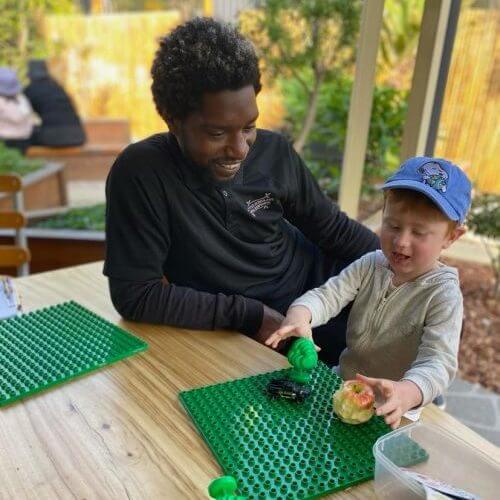
You can send them to their centre with a comfort toy or blanket that they can reach for when they need it. You could also send them with a picture of their family, or a note in their bag telling them how proud you are of them and how much you love them
Spend an extra five to 10 minutes with them before they start their day at Little Scholars. Just a few connected minutes with your child can make a significant difference in their day
Have a conversation with them on the way to childcare or when you get to their centre that focuses on what they can look forward to after you pick them up later, maybe that conversation looks like, ‘When I come to get you, would you like to go to the park or go pick out some new books to read at the library?’
Bring a snack for the trip home, sometimes hunger can be distracting for them and can stir up emotions.
When you pick them up, maybe all they need is a big reassuring hug. Maybe they need quiet. Maybe they’d like to tune out to some music they enjoy for a few minutes. Maybe they need to relax on a park bench or burn some energy at the playground. Follow their lead and take some time before asking questions about their day.
Again, feel free to talk to your educators about what’s happening at home. We have an open-door policy and we’re here for you. Your child’s educators, after spending time with your little one, may have specific ideas on how to help your child or can try to dedicate some quality time with your child to help them relax and feel cared for.
By understanding a little better why there are strong feelings coming from your child after a day of childcare, you are better armed to handle after school restraint collapse or even moderate reactions before their start.
For more information:
Are you a parent racking your brain trying to figure out how to get your little one to stop hitting, biting, or pushing other people?
The good news is, it’s really common. The bad news for you is, it’s still your child doing it and you have to deal with it.
For babies, this is a way to explore the world through cause and effect. Besides teething, babies bite to see what you’ll do. If you laugh, they might try it again to get the same reaction. If you get mad, that baby might be fascinated by your reaction, not quite understanding facial reactions and meaning.
For toddlers, they may have seen other children do it. They might do it because they’re angry, upset, hurt or excited and don’t have the means to express it differently.
Both babies and toddlers could be pushing, biting or hitting because they feel overwhelmed, bored, overtired or hungry.
No matter why your child is doing it, it can be frustrating and embarrassing for parents. But know that it’s not about you. It’s not your failure as a parent. When we think our child’s behaviour with us is a reflection on ourselves, we bring a lot of baggage with our response.
Now’s the time to manage it calmly.
“I like to explain to parents that these kinds of behaviours aren’t usually appropriate, but are age-appropriate and can come from a place of frustration in children,’ says Claire, an educator at our Nerang Campus.
“Biting is common around the age where children are beginning to learn how to talk and can’t quite get the words out and are frustrated.”
It is important to ensure when you are guiding a child’s behaviour to label the behaviour and not the child, Claire says. Telling them they’re being bad or naughty isn’t effective, and it isn’t likely to change the behaviour. Remember, every child is good. They are learning everything, including regulating and dealing with emotions and impulse control.
Claire also recommends not projecting your own feelings about your child’s negative behaviour. For example, try not to make statements like ‘Stop it, you’re making Mummy sad’ or ‘Look what you did!’ Try to remember that your child is learning empathy, so putting shame or guilt on their actions won’t fix the negative actions.
So how do you respond?
Stay calm. Your emotions can set the tone for how to bring down a heightened moment. By yelling or immediately punishing, you’re giving that undesirable behaviour attention. It’s also modelling explosive reactions, like what you as a parent are trying to adjust.
A calm, firm response could look like ‘Hitting/Biting/Pushing is never OK. I won’t let you hurt your brother.’ If the behaviour continues, a follow-up ‘I’ll move your brother over here to keep everyone safe.’
This sets and actions the boundary for behaviour. Once everyone is calmed down, that’s a better opportunity to teach coping skills, according to Sarah, an educator in our Senior Kindy studio from Deception Bay.
“Calm approach, sometimes for the older children, they need that time to themselves let them have their rage in a safe way, of course. There is no point in trying to get them to calm down when they are in the state they are in. It’s best to wait and then talk to them once they are ready,” she says.
If you feel your child is old enough to have a conversation about what happened, you could follow with, ‘You seem to have a hard time not pushing, I wonder why that is?’ If they tell you what/who is bothering them, you could tell/make up a similar story and tell them how you handled it. By modelling a response to a negative feeling, parents can help children understand and regulate their emotions.
Brooke, a Schoolies educator also at our Deception Bay campus also suggests asking the child what they need in that time can help.
“Every child is different and an approach that will work with one might not necessarily work for another or might not work every time which makes things difficult,” Brooke says. “I feel like asking the children what they need in that time is a big thing in diffusing a situation, because some children could want the space, where others may need a hug to feel safe and secure.”
Hayley, an educator also at Deception Bay in our toddler studio, agrees how the situation is dealt with is not a one-size-fits-all approach.
“I would say it would depend on the situation, age group and other factors,” Hayley says. “If it’s a child that’s not going to stop, I would then definitely redirect either to a different activity or to someone that they feel more comfortable with. For example, say it’s a child from the Senior Kindy room who’s just moved up to the Kindergarten room, you could ask them, ‘hey would you like to go see (previous educator)?’ if they say yes, it removes them from the situation, and it’s the child’s choice too.”
“I also like to give them a choice when redirecting so, ‘hey I know you’re frustrated, would you like to go run outside or do you want to do some painting?”
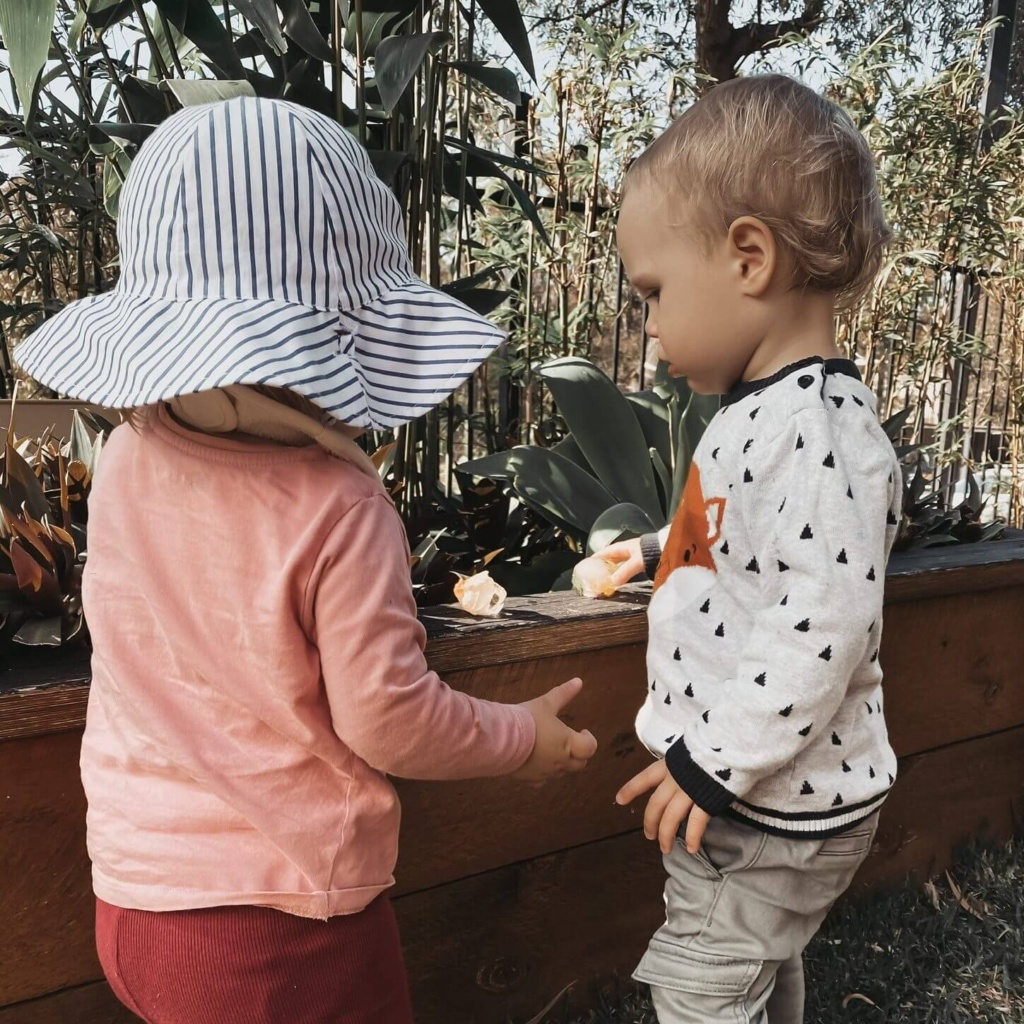
Some experts also recommend trying to fight the impulse to force your child to apologise. Children need to focus on learning to regulate those emotions, if you’re asking more of the child by forcing an apology, it’s likely to make them more frustrated or ashamed, and they won’t do what you’re asking, and certainly won’t feel like they’re being seen. They will learn apologies in time, but we don’t want them to think ‘when I’m sad I should say sorry’ but rather ‘when I’m sad I should think about what made me sad, take deep breaths, count to 10.’
However, it’s still important for your child to understand that other people have feelings too, so you could say, rather than forcing an apology, ‘Let’s see how we can make him feel better.” By involving your child in the resolution rather than ordering them to do something, you’ll likely see better results.
“Praise your children when they are doing something positive, even on the days it feels like all they have done is bite or hit,” Claire adds. “Soon enough they will be chasing the positive reinforcement and be replacing the negative behaviours with more positives.”
Guiding positive behaviour is a goal of Little Scholars by creating a safe environment for the children within our studios.
“This is guided by John Bowlby’s attachment theory,” explains Chloe, an educational lead at our Redland Bay South campus. Bowlby believed that the earliest bonds formed by children with their caregivers have a tremendous impact that continues throughout life.
“Every morning upon arrival, we create a warm welcome space for the children to be dropped off to. Once the children feel a sense of belonging within their learning environment, they are able to venture off and participate in the day’s learning.
“Respect and care are important parts of our day-to-day curriculum and is embedded in our learning by educating the children on their emotions identifying how they feel through use of conversation and cues, and guiding them in strategies that can assist with the way they are feeling,” she continues. “With these embedded practices, it helps to eliminate those rough behaviours.”
For more information:
Related topics
Everyone knows or has a fussy eater. Whether it’s a two-year-old who won’t try new foods, a 10-year-old who is stuck on plain pasta or a ‘whitearian’ who only eats shades of beige, feeding children can become a real struggle. A period of fussiness is a normal part of a toddler’s development and is a sign that they are becoming more independent, but left unchecked, fussy eating can take over mealtimes making them stressful and unenjoyable for everyone.
Most fussy eating is behavioural, but it is important to check that there aren’t other reasons for your child’s fussiness. A really easy way to do this is to think about whether your child is fussy across different environments. For example, if they won’t eat this and that at home, but they will eat it at daycare, it’s a good indication that their fussiness is behavioural. Often, when a child is taken out of their usual environment, given a routine that they are expected to follow, and sit with other children, they will eat things that parents never thought possible. Are you struggling with a fussy eater? Contact our Little Scholars Day Care Centre to learn how we combat fussy eating during daycare.
Well firstly, the most important step no matter what the origin, is to take the pressure off. Although this may feel like a leap of faith, you won’t get anywhere while mealtimes are fraught with tension. Make sure that there are one or two foods you know your child will eat at each meal, but for the rest of the meal – make it something that you enjoy. The best way to get your child interested in a new food is to sit at the table with them and enjoy it yourself.
It can also help to let them know what is expected. For example, the mealtime routine might be to wash hands, come and sit at the table, stay at the table until the meal is finished, take the plate to the bench, leave the table and wash hands. This is exactly what happens at daycare and is an example of how routines work. It is important not to drag it out – a reasonable amount of time to expect your child to sit at the table is about 20- 25 minutes, beyond this, it gets really tiring for them and they won’t likely eat a lot more with extra time.
You can also help your child become a little more adventurous by breaking it down into manageable steps. Making small changes to their favourite foods such as cutting them differently, making them slightly crunchier, or changing the colour (eg. beetroot hummus) is a good place to start.
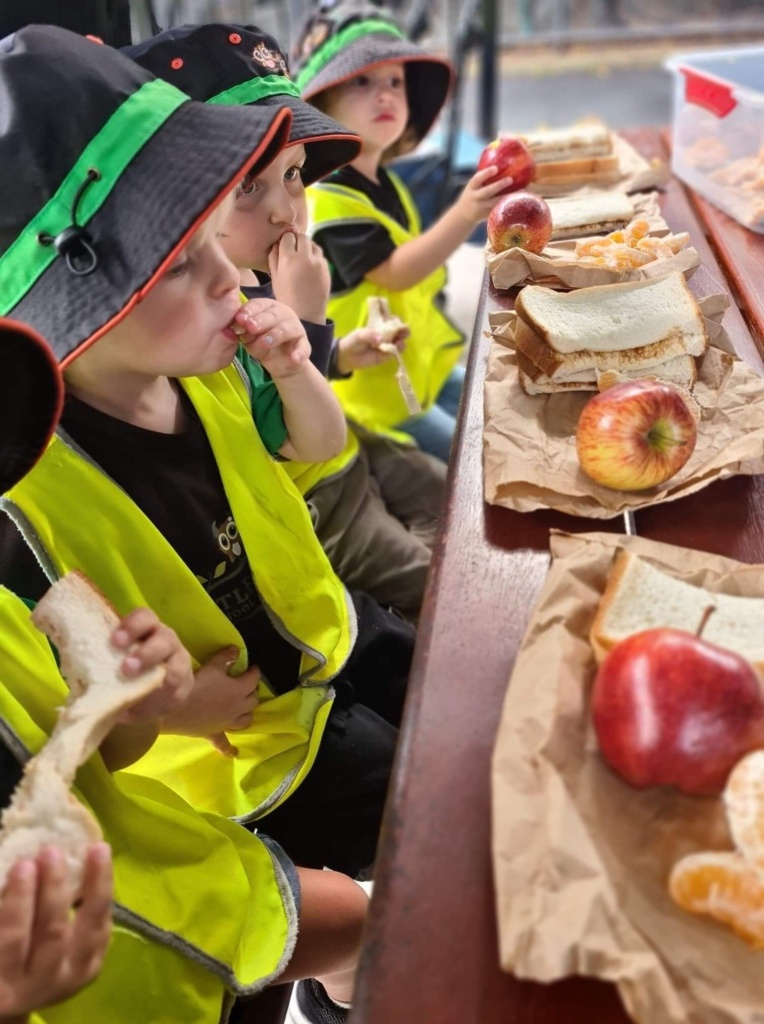
Interested in Child Care that assists with fussy eating and other areas of concern? Contact us today or book a campus tour.
AUTHOR: JACQUI PALMER, PAEDIATRIC DIETITIAN FROM MY NUTRITION CLINIC
Jacqui is paediatric dietitian who would like all children to have the opportunity to become ‘good eaters’ with the right support and guidance. Jacqui teaches parents and children these daily habits and strategies through her Fussy Eaters Therapy program. Jacqui welcomes children with sensory and developmental issues such as Autism to join the program.
Whether your child is starting childcare for the first time or joining us at Little Scholars, change can be intimidating for both the child and parents!
We hope you’ve taken advantage of our playdates so that the centre your child is joining isn’t brand new to him or her. The purpose of our playdates is to familiarise your child (and you!) with their new educators, peers and surroundings, and help our educators get to know your child.
Let your educator know about any settling techniques or routines your child is used to for sleep, as well as your expectations and discipline.
We recommend you talk with your child about what will happen at the centre in the days leading up to their start. Remind them about their playdates, such as if you remember educators or peers’ names, or one part of the daycare they may remember (our playgrounds are always a hit!).
Get their help in packing their daycare bag. Keeping your child an active participant in getting ready our campus helps them get used to the idea. Especially if there’s a special toy or blanket in there for them, they’ll be comforted knowing it’s there if they need it.
Try to keep goodbyes short. Be calm. Of course, respond to your child’s distress and comfort them, but be firm and reassure them you’ll be coming back.
Spend extra time with them to reconnect when you return and ask them about their day. This is also an opportunity to ask your educator for some useful questions that can help encourage your child to open up about their day’s experience.
Don’t forget, we’re here for you too, parents! If you have any questions about how your child is settling in, please don’t hesitate to call your campus or have a conversation with your lead educator at any time.
Have you heard the term ‘frustration tolerance’ before? If you have a small child or work with them, you certainly know all about children struggling with frustrating emotions. Frustration tolerance is the ability to work through a problem, breathe, and figure out a solution.
You see your child trying out a task and not be able to get it to work the way they want to. They get frustrated and ask for help. You oblige because you just hate to see them mad at themselves.
When you see a baby getting frustrated and crying, you want to jump to her rescue and give her that item she’s trying to reach for. When your toddler is working to solve a puzzle, we want the child to get it done and get it done right on the first go. If not, we jump in to fix it for them.
But what is the underlying message we are giving the child every time we do a task for them?
‘I can do it for you, faster than you can, more efficiently than you can.’
How do they learn to do something on their own if they always have help? How do they have a sense of accomplishment if they never go through the trial-and-error process while learning to do something.
The next time the child struggles with something, they’ll just get you to do it for them. That frustration tolerance will dissipate, and they won’t struggle to get to an answer. They will look for instant gratification, instant solutions and that doesn’t come easily and quickly, they won’t mind quitting.
How does that baby learn to move her body to get that item closer to her if you’ll just pass it to her? How does always doing something for your toddler help him when he gets to school and there are several children who need the educator’s attention?
So much in society is already done for us thanks to technology. We don’t need to know basic math because our devices have calculators, or we can just ask the question in the search bar. We don’t need spatial awareness or how to read maps, because Google and Apple have taken away that need. But for your children, where there’s an opportunity to learn frustration tolerance, we should give it to them.
Patience and persistence are two components we all need to deal with frustration, and a certain amount of both will help your child stick with a problem or challenge to find a solution.
At our Stapylton campus, educator Holly Medbury teaches Senior Kindy, where there’s a lot of focus on independence, self-help skills, regulating and becoming aware of emotions, and providing risky and challenging experiences for the children to enable critical thinking and problem-solving skills.
There’s a yard at Stapylton called ‘The Natural Yard’ which has a cubby house, two large tunnels, and a musical xylophone wall. It’s mostly just surrounded by beautiful nature, just for a change where they can explore their imagination.
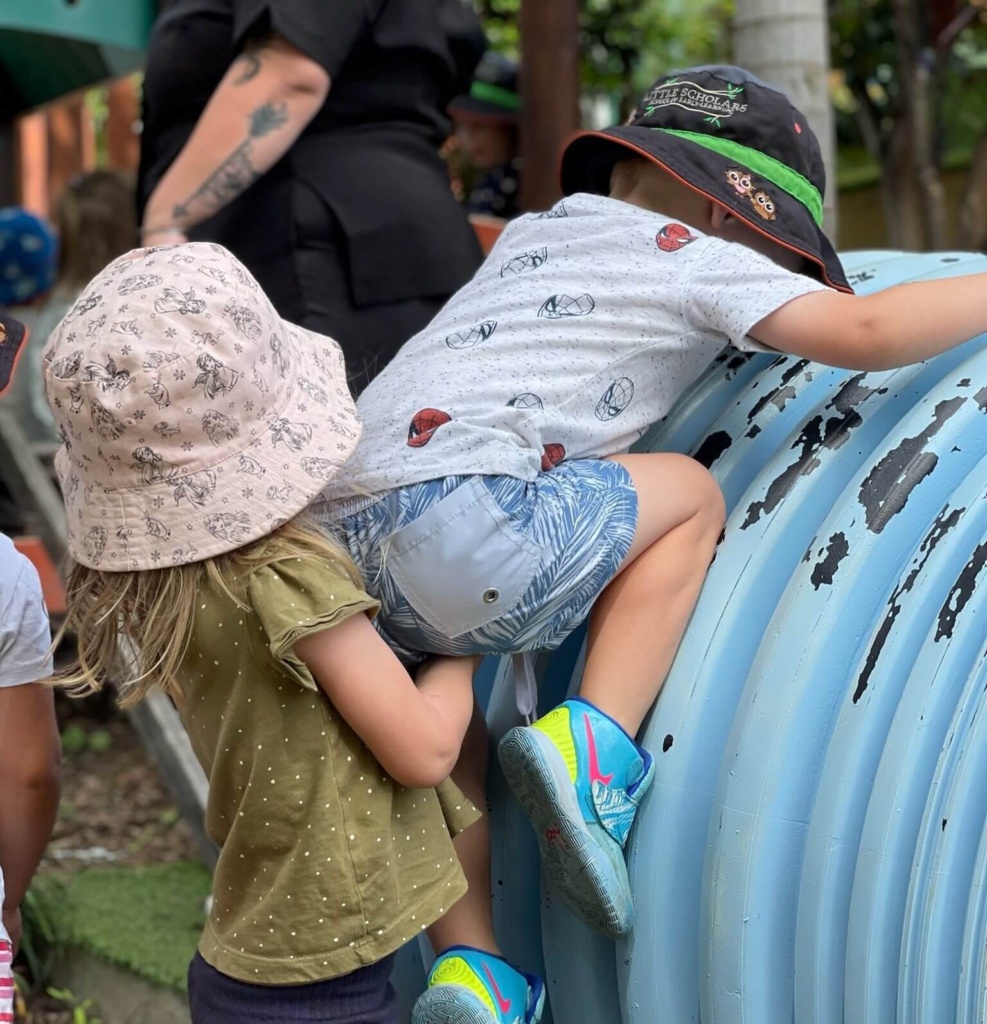
“With the two tunnels we encourage two children at a time to climb up the tunnel and sit up the top, which is a big achievement,” Holly says. “This is a challenging/risky play task that we enforce and provide lots of praise, encouragement, strategies if they are struggling to climb up.
Here are some of Holly’s encouraging words she provides with experiences like this:
“You are doing so well! I can see it looks quite tricky, how else do you think you can get up there?”
“Have a look around you and see if there is anything that can help you.”
“You’re doing your best and I’m so proud of you! Maybe you could use your knees going up the tunnel, as I can see there is room for your knees which might make it easier?”
By teaching our children that we can try again and that it’s okay to not get it right away takes some modelling from a parent and educator perspective. By adults modelling frustration in tasks and trying again in front of our children, by saying, “Oh no! It’s not working for me. Let me try again,’ normalises frustration tolerance and tells them that they can try again too. Children with greater frustration tolerance have been shown to grow up to be happier and more successful.
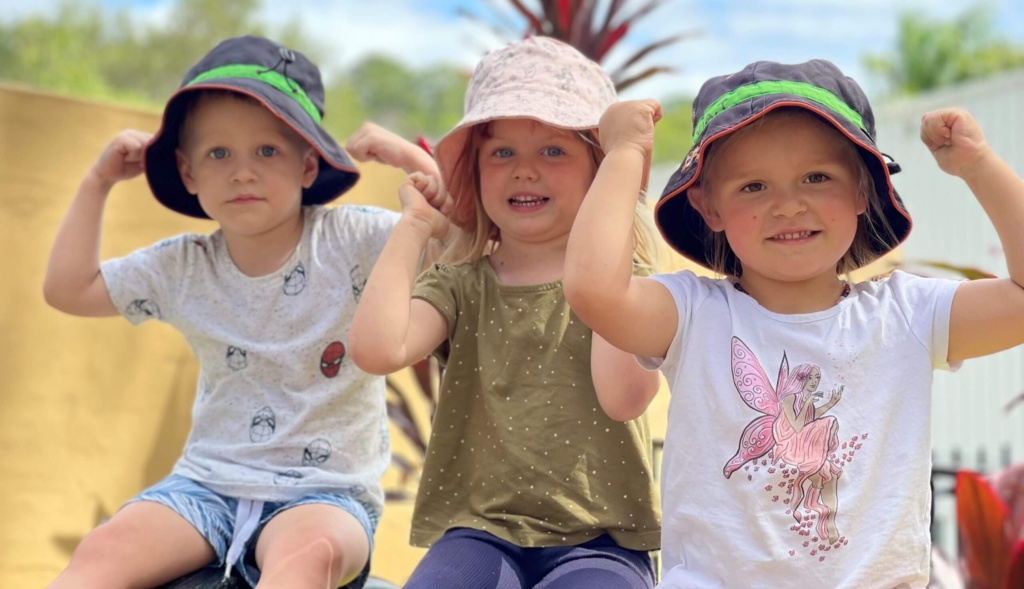
So how do we teach children to be more patient and persistent when it comes to tasks?
Learning patience
It’s never too late to encourage your child to try more, do more for themselves, which in turn builds their self-confidence, trust in their own abilities, and sense of self-efficacy.
When a baby or toddler is ready to reduce the number of naps they have each day, or even drop naps altogether, this can be an equally challenging transition for parents!
Daytime naps naturally lessen in length and frequency as a child gets older because they can tolerate more awake time, from both a physiological and neurological perspective as they grow. Circadian rhythms – your 24-hour body clock that helps control your daily schedule for sleep and wakefulness – also mature as sleep begins to consolidate, particularly at night.
Especially for new parents, you may be wondering what some of the signs are that your child is ready to drop a nap. Dropping a nap is a transition that happens over time. Babies need to decrease their number of naps incrementally, but that won’t happen on its own, babies and toddlers still need your guidance to help ease these changes. And our educators are here to help.
Since our educators spend a few days a week with your little one, they have the knowledge of what to look for in signs of tiredness, or readiness to stay awake just a little longer! It’s important to remember that each child is different. What works for one, won’t work for another exactly the same age or way, and this is not a process to rush, small people need their rest!
Here are some signs that may show your little one is ready to drop a nap:
“For some children, cutting down their bottles or altering their times they have bottles (obviously age-appropriate) may help with stretching wake windows,” says Hayley, an educator with our Deception Bay campus.
“We aim to wake the child through gentle means, such as hustle and bustle around them to help them wake more naturally, which can help too.”
Hayley says looking at wake windows as a guide for your child can help and you can find free resources and blogs by sleep experts online. But she says keep in mind small children going through leaps and teething may have more difficulty with their sleep, but these adjustments are usually temporary.
Keeara, an educator in the nursery at our Yatala campus says they’ve had some parents request help in stretching their child’s nap to one sleep to transition in the toddler room.
They find play in an outdoor environment during the morning keeps little ones occupied enough to stay awake – but says if their children did fall asleep, it was obviously needed, and educators will try for a short afternoon nap to make up for it.
Fresh air and active fun like sensory activities are a great way to stretch that wake time out a little longer for little ones. Maybe for your child, it’s making music or playing with different textures that will keep him or her engaged and interested just a little longer.
Our Facebook and Instagram channels offer ideas on creative activities our educators do across our campuses to entertain little ones, which can really help stretch out those wake windows.
Like Hayley, Keeara and her fellow educators have also found works is having lunch around 11:30 and putting bottles on the warmer at the same time so they’re ready to go when lunch is finished.

“We’ve found most of the children would have their bottle then self-settle in their cots as they were so exhausted at this point,” Keeara says. “Surprisingly, it worked really well and made the transition smoother, they even slept for a longer period of time having just the one sleep.”
Then comes the (often dreaded by parents) time when children are ready to drop naps completely.
“We have a fair few two-three-year-olds in our room who have dropped sleep,” says Skye, an educator at our Yatala campus. “The most common sign for them was becoming upset at rest time, moving around a lot and getting up for drinks, toilet and to just tell us something.”
She says even if educators suspect a child is ready to drop naps, they start off with still giving the child a bed, but giving them a quiet activity like books, puzzles, or drawing supplies.
“That way they still have the option to fall asleep if they want to, if they haven’t slept the whole week, we then move them to an activity mat that we keep clear of beds, again for quiet activities while their peers sleep,” Skye says.
Independent play is also important for your child’s development, and it’s central to effective quiet time, so it’s worthwhile implementing it into your older toddler’s daily routine. Quiet time is a time during the day where your child has an opportunity to rest their busy little bodies and minds. The length of quiet time can range anywhere from 45 minutes to 2 hours, depending upon the child, but consistency in this new quiet time will work wonders for the whole family.
Skye says dropping naps is something they talk to parents about, and from those discussions, they work together on a plan to help the child adjust.
As another year draws to a close, and we look forward to spending time relaxing and with people we love, we decided to ask our staff what some of their favourite traditions around the holidays are. Who knows, it might inspire some new holiday traditions for you!
“Every Christmas, we love to go camping at Tipplers on the boat and do Christmas Day swimming, eating, being merry and playing beach cricket as a family” – Renee, Campus Manager of Little Scholars Nerang.
“Each Christmas, we love to go down to my parents’ house in Tweed and spend time at as a family at Kingscliff beach after Christmas lunch.” – Carly, Campus Manager of Little Scholars Redland Bay South.
“Our family enjoys a special Christmas Eve dinner, then have an evening of watching The Polar Express every year!” Taylor, Campus Manager of Little Scholars Yatala.
“All the houses on our street (cul-de-sac) decorate the front of their houses and front gardens with Christmas lights. Every night in December all the children and families go out the front to play, talk (and drink) and look at the lights. We have lots of other people also visit our street. The kids love it!” Melanie Excell, Operations Manager of Little Scholars.
“Each December my circle & I organise a date for “Friendmas” prior to Christmas Day. Both Christmas and Friendmas is spent out in the sunshine either by the pool or at the beach. We love to end the year being surrounded by the people we adore and love!” – Sam Schmidt, Assistant Campus Manager of Little Scholars Burleigh.
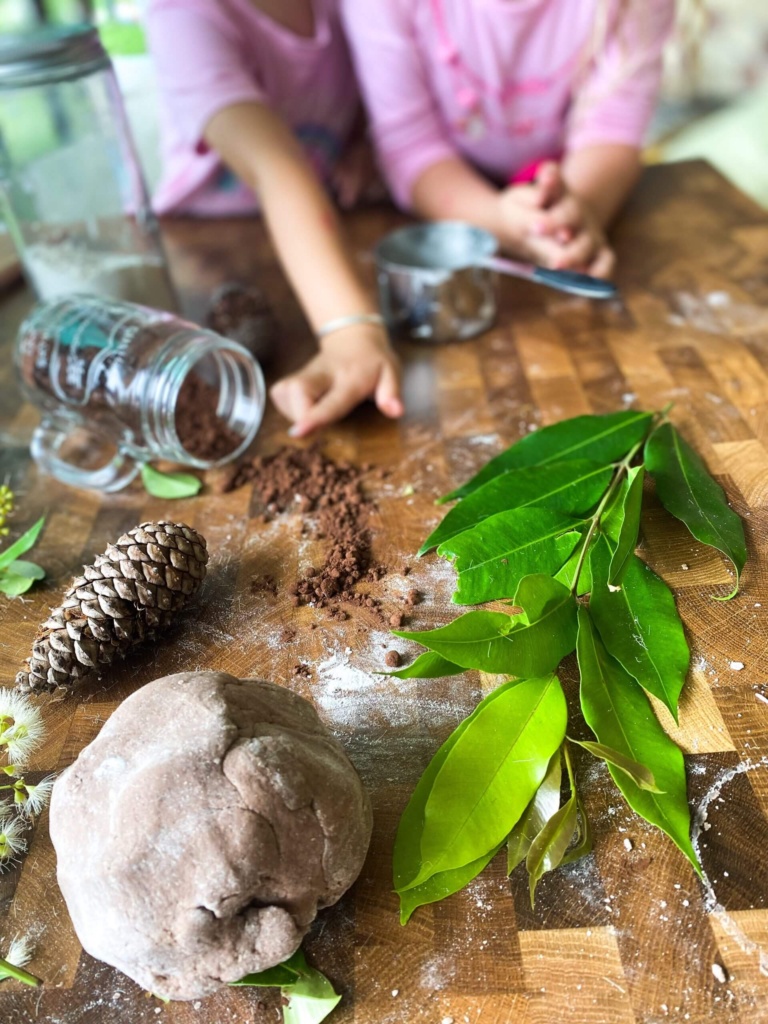
“My Christmas traditions are always around food, my mum is Dutch/Indonesian, so our typical Christmas treats aren’t rum balls or White Christmas. Our favourites to bake/cook are spekkoek (cake), speculaas (biscuits) and soto ayam (soup) are our faves!” Samantha, Campus Manager of Little Scholars Ormeau.
“One of my favourite traditions stemming back from when I was little in Canada, was making gingerbread cookies and decorating them with my Nana, little sister, my dad and my aunt. Now, we head over to my husband’s family home and spend an afternoon making cookies and decorating with his nieces and nephews. This year will be the first year our toddler can help!” Christina, Social Media and Marketing, Little Scholars.
“My sister makes a Christmas event calendar for friends and family to participate in over December. For example last night she did Christmas trivia. Also, we usually go and get a Christmas photo together, my siblings and me.” – Alice, Campus Manager of Little Scholars Burleigh.
“Our perfect Christmas Holiday activity is to grab a blanket and head down to the Broadwater and watch the sun set. We love taking the fur babies, grabbing some freshly cooked fish and chips and hanging out with friends for the afternoon. Definitely fills our cups.” Andrew, Executive Director, Little Scholars.
“We always watch “Carols in the Domain” together with candles and sing along to the Christmas carols – whenever this is on. We would always go to our local carols by candlelight as well. We also always put aside one night everyone is free to go and spend a few hours looking at Christmas lights in the area.” – Jaimie-Lee, Enrolments Officer, Little Scholars.
Little Scholars wishes you a happy, healthy holiday filled with love and memories to last for years to come.
Sadly, losing a pregnancy is a heartbreak many Australian families experience at least once in their lives. In fact, up to one in five pregnancies end in miscarriage or the loss of a child. When that loss happens, emotions can range from sadness, depression, anxiety, anger, and confusion. These feelings are not only limited to the parents but the whole family.
Even as their parent, it can be hard to figure out how to talk to your children about the loss of a baby, especially as you process your own feelings about it. How that talk happens will likely depend on your child’s age, developmental level, and temperament.
Even if they hadn’t been told about the pregnancy, your child may have the sense something sad has happened. How you handle this is up to you. This may be the time where you tell them what happened, or perhaps it’s something like ‘Mummy and Daddy are feeling sad, but don’t worry, we’ll be okay and nothing we feel takes away from how much we love you.’
If your child has been told about the pregnancy, use words and concepts that they can easily understand. For example, the word miscarriage isn’t a term many young children would recognise. Additionally, toddlers and preschoolers also may not understand a phrase like pass away, so try to steer clear of euphemisms and cliches.
You may choose to explain that the baby was sick and couldn’t live outside of Mummy’s belly. Or that while your child grew strong and healthy in Mummy’s belly, you don’t know why but this baby did not. Remind your child what happened was no one’s fault, and nothing could’ve changed what happened.
Tell your child there’s no shame in showing emotion. If you get upset while talking to your child, you could explain it by saying something like ‘Mummy was crying today because she’s sad about the baby,’ or ‘Daddy was frustrated today because there was nothing he could do for the baby.’ Children are better at ‘reading the room’ than you think. They can pick up on the emotions of the grownups around them and their behavior might shift – try to be patient and understanding while they process their feelings.
Remind your children that it’s something hard that’s happened to the family, and it’s okay to feel sad, angry, confused or any other emotions they may be feeling. Sharing how you feel demonstrates healthy coping skills, a valuable life-long skill for your child. Don’t be afraid to ask your child for a hug if you need one, they may like to know they can comfort you too.
Ask your child if they have any questions about what happened, they may have lots or may not say much at all. Give your child time to process what they’ve just heard and remind them that you’re always there if they have questions later or just want to talk. Offer coping strategies if that might work, either through conversations, books to read, art, or through play.
Check-in with them after a few hours or a few days. Once they’ve had some time to sit with the news, there may be follow-up discussions to have and let them know that’s okay. Encourage them to talk about it with you or someone they trust. If you’re comfortable let your child’s educator know there’s been a loss in the family or some changes at home, this allows your child’s educator to support them and to expect changes in behaviour and will ensure they can help your child navigate their emotions while in their care.
Depending on your culture or religion, you may want to host a grief ritual following a pregnancy loss, anything from a funeral to planting a tree in the baby’s honour. Invite your child to participate.
Don’t forget to look after yourself. Take time to grieve and to heal. It can be hard when you have other family members to look after, but it’s important for the whole family that Mummy or Daddy’s mental health is looked after. Do whatever self-care means to you. Take a bath, take a walk, embrace your emotions through writing or art. Talk to your partner, a friend or family member, a professional, or someone you may know who has gone through something similar. There are groups on Facebook or even hashtags to follow on Instagram or TikTok if those are spaces that work for you.
Finally, keep in mind a child’s grief can look very different from your grief, as well as how they deal with that grief. Let your child know they’re loved, there was nothing they did or didn’t do that could have changed the outcome, and that you’re here for them in whatever way they need you to be.
Before we get into your child’s healthy eating habits. Let’s reflect for a moment on your own relationship with food. Did you have to finish all the food on your plate when you were a child? Were sweets offered as a reward for good behaviour? Were there starving children in Africa always ready to take your left-over dinner when you were growing up? Do you give foods the title ‘good’ or ‘bad’? Have you ever felt ‘bad’ for eating a certain food? If you are human and living on planet Earth, then you will have most likely answered yes to at least one (if not all) of those questions.
Your relationship with food as an adult very much begins in childhood. So, as a parent you have an opportunity to shape how your children relate to food. No pressure then!
Here are some key tips that you can start using straight away at home to foster healthy eating habits:
There are no good or bad foods out there. Just food. One massive bowl of broccoli or a single bar of chocolate isn’t going to make you instantly healthy or unhealthy. Likewise, you are neither a better nor worse person for eating it (if only it were that easy!). For sure there are unhealthy eating patterns which, if you keep them up then over time leave you feeling a bit blah and may lead to looks of disappointment from your GP. This leads me to the next tip:
As a parent myself I know how very frustrating it is to use desserts and lollies as a bargaining tool. By using food as a reward, we are sending a very strong message to our children that these foods are more special than the rest. It teaches them to use food as a way of dealing with hurt or difficult feelings. And we all know where that leads! Instead look for non-food ways to feel better – sing, cuddle, talk about our feelings. Anything but food.
Children are born with a magical power called intuitive eating. This power allows them to eat when they are hungry and stop eating when they are not. Amazing huh! Most adults I see later in life with concerns about their weight have lost this skill and no longer trust in their own bodies natural hunger and fullness signals and find themselves overeating or feel a lack of control around certain foods. To foster your child’s natural gift, let them dictate when and how much to eat. Sounds scary I know. Giving gentle reminders to eat is ok (as we know children can get distracted) and let children tell you when they have had enough to eat. Their body clock may be on a slightly different time zone to yours. My daughter’s eating patterns were completely out of sync with the rest of the family and by the time dinner rolled around she was exhausted and had very little interest in food. Breakfast however was a completely different story!
These three tips are only the beginning of forming a healthy interdependent relationship with food but are a great foundation for many happy mealtimes ahead! Wanting to learn more about healthy eating habits? Contact us today and talk to our Little Scholars team.
Written by: Anna D’Arcy, Accredited Practising Dietitian at My Nutrition Clinic. Anna is a mum to two children under 10 years and has 20 years of experience working as a dietitian and helping families reach their health potential.
At Little Scholars School of Early Learning, we’re dedicated to shaping bright futures and instilling a lifelong passion for learning. With our strategically located childcare centres in Brisbane and the Gold Coast, we provide tailored educational experiences designed to foster your child’s holistic development.
Let us hold your hand and help looking for a child care centre. Leave your details with us and we’ll be in contact to arrange a time for a ‘Campus Tour’ and we will answer any questions you might have!
"*" indicates required fields